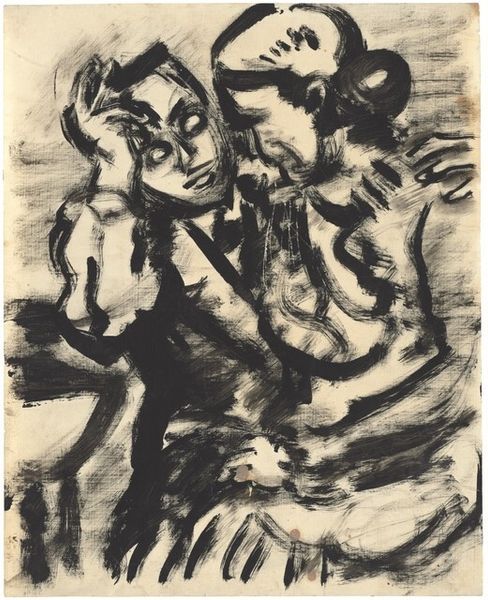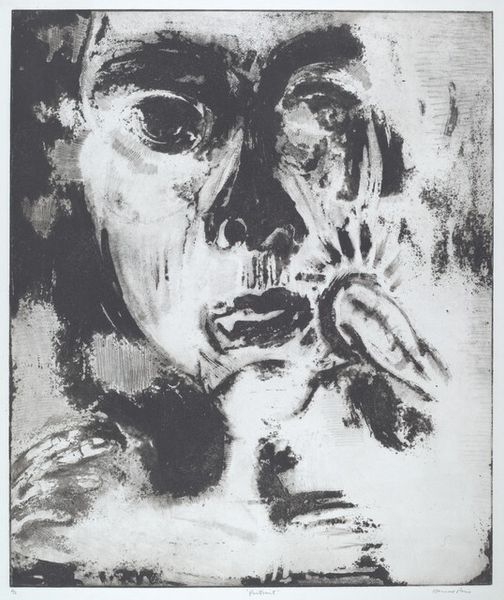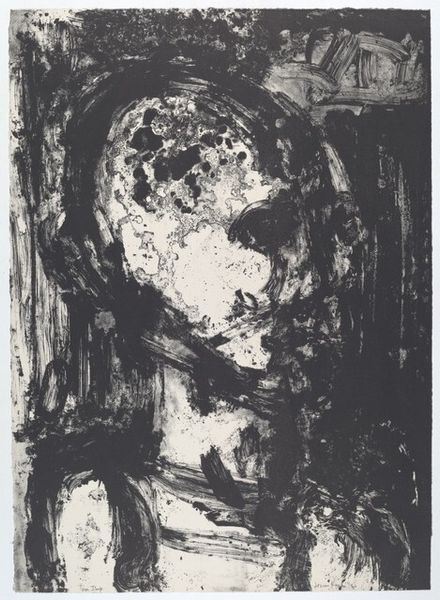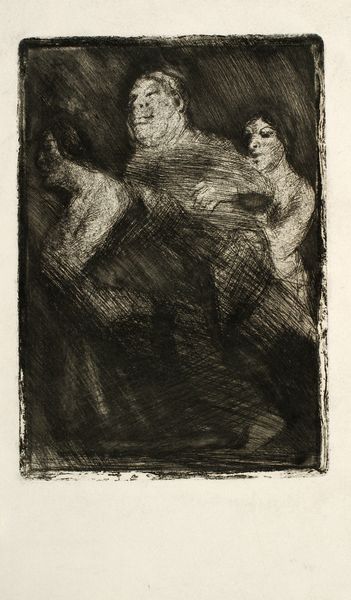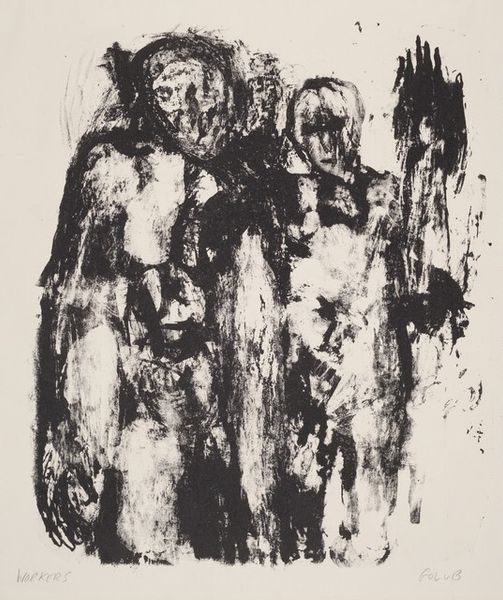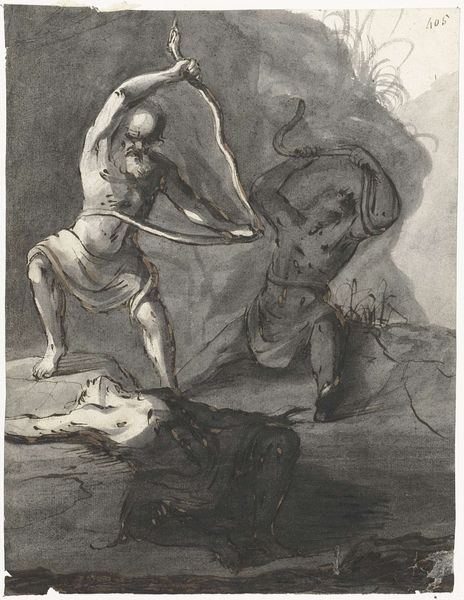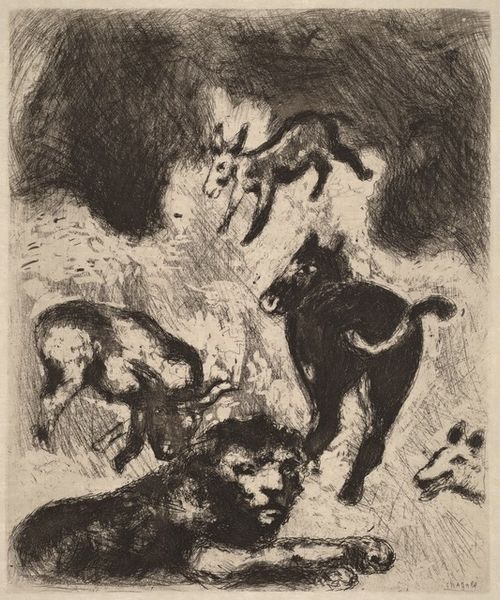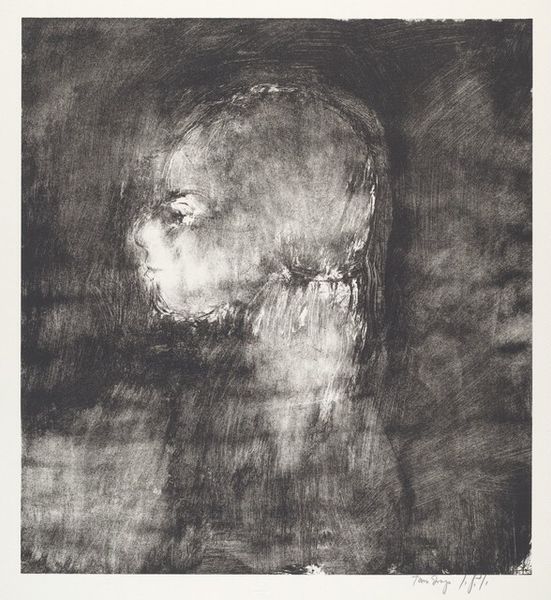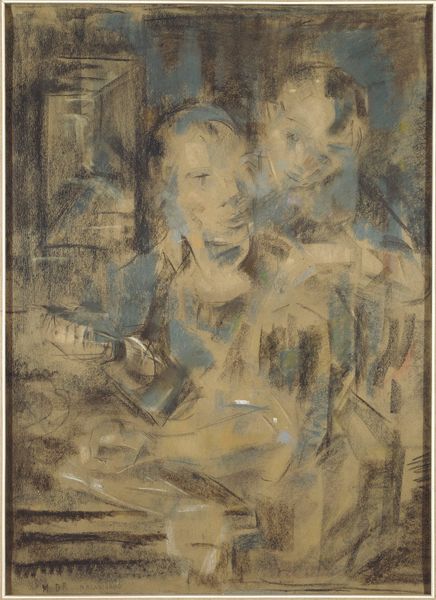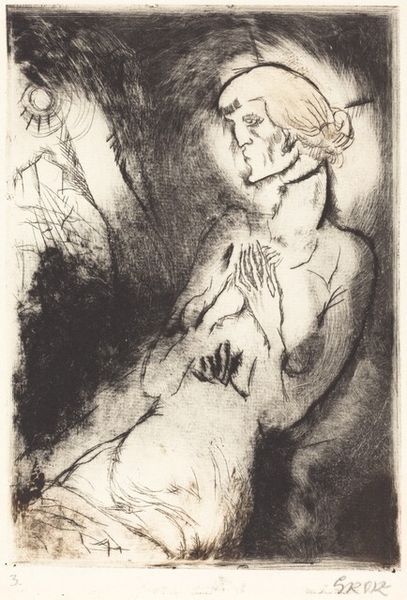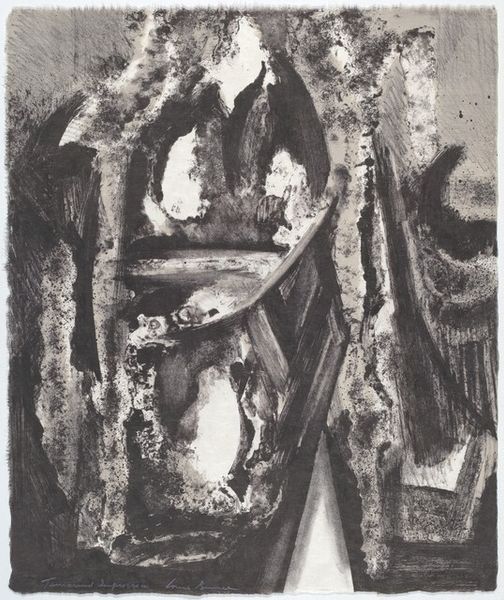
Dimensions: image: 22.1 × 17.5 cm (8 11/16 × 6 7/8 in.) sheet: 32.8 × 33.7 cm (12 15/16 × 13 1/4 in.)
Copyright: National Gallery of Art: CC0 1.0
Editor: This is James McCracken Jr.'s "Self-Portrait" from 1969, created using charcoal. The starkness of the charcoal really gives it a raw, almost unsettling feel. What strikes me most is the artist’s decision to use charcoal. Why this medium, and what does it contribute to our understanding of the piece? Curator: Consider charcoal itself: burned wood, residue of a consumed material. In the late '60s, you have artists keenly aware of material scarcity and the means of production. The choice of charcoal isn't just aesthetic; it speaks to a culture grappling with consumption and waste. How might McCracken be using the medium to engage with the socio-economic landscape? Editor: That makes sense. The fleeting nature of charcoal, how easily it smudges… could that relate to the disposable culture emerging then? It feels like it rejects traditional, more durable art materials. Curator: Precisely. Think about the labour involved too. The repetitive mark-making, the almost frantic energy… it mirrors the anxieties of a society obsessed with production. The "surrealism" tag might be better understood as an expression of the material conditions shaping reality. Do you see echoes of factory work in this piece? Editor: Definitely, now that you point it out. It's not just a portrait of the artist, but maybe of the society he's embedded in. Curator: See how understanding the "what" and "how" of the piece—the material, the process— illuminates the "why." It encourages us to consider what McCracken is communicating about labour, material and identity in the late 60s. Editor: I never would have seen all of that just from looking at the surface. Curator: Art is never just what it seems, is it?
Comments
No comments
Be the first to comment and join the conversation on the ultimate creative platform.

